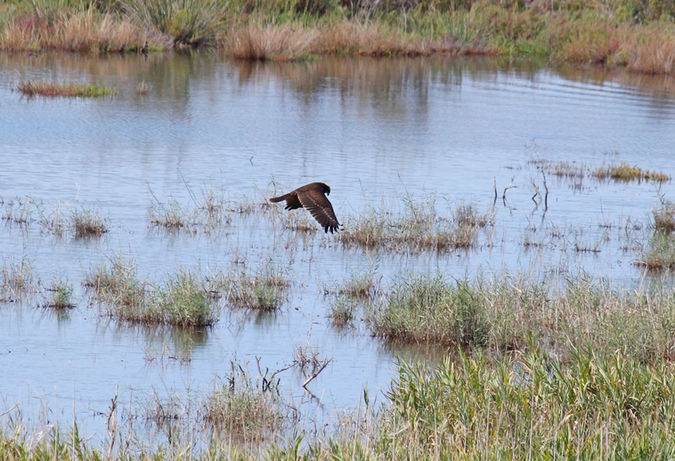

MARSH HARRIER
The largest harrier in Europe, the marsh harrier is 480 to 560mm long with a wingspan of 1150 to 1300mm. The male’s plumage is mostly dark brown with a paler head and breast. When in flight, the wings are blue-grey with black wingtips and a blue-grey tail is obvious. The female is almost entirely chocolate brown, except the top of the head, the throat and the shoulders, which are a lighter yellow colour. They hunt in typical harrier fashion, gliding low over the ground in search of prey, with their wings held in a shallow “V” shape and legs dangling. Small mammals, birds, insects, reptiles and frogs are all on the menu.
The marsh harrier is closely associated with reedbeds but can also be seen flying over flat pastures with ditches and boggy fields. Livadi marsh has all these habitats and is a wonderful place to watch them. The nest is made from sticks, reeds and grasses and is usually found in a reedbed. 3 to 6 eggs are laid, incubated for up to 38 days and the chicks fledge after 30 to 40 days.
Marsh harriers have been seen throughout the year at Livadi, but I have only ever seen females there, so I am unsure if they are breeding.










